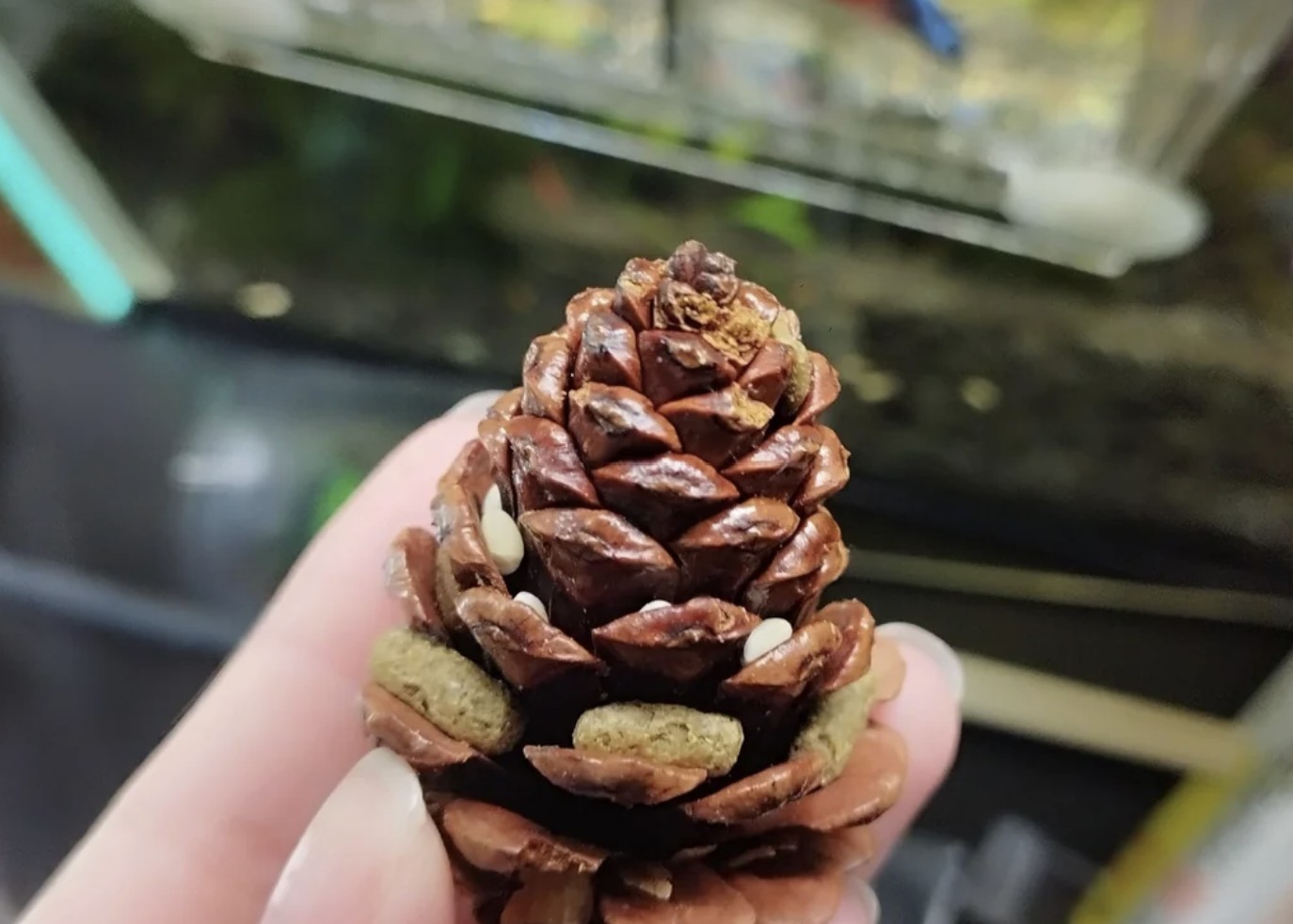How Pine Cones Saved My Garden (And Might Save Yours Too)
The Morning That Changed Everything
One morning, I stood barefoot in my yard—half-asleep, totally stunned. Plants were dug up. Leaves snapped. Soil tossed everywhere like confetti. It looked like a late-night party hosted by the local wildlife.
Cats? Definitely.
Squirrels? Of course.
Something with grabby little paws? Probably a raccoon.
Whatever it was, it had zero respect for my garden. What started as a joke quickly felt personal. My husband and I were crushed. We even asked our neighbors what to do.
We Tried Everything—Nothing Worked
We gave it a real shot. Spicy powders. Homemade sprays. A motion-sensor gadget that scared me more than the animals. We even got a plastic owl with big googly eyes that just stared blankly while the chaos continued.
Then came the twist: pine cones.
The Random Idea That Actually Worked
No, I didn’t read about it online. I just saw a pile of pine cones near a trail and thought, “Hey, these are spiky. Cats hate spiky.” So, I brought some home.
My husband raised an eyebrow—but I gave it a shot anyway.
Why Pine Cones Work Like Nature’s “Do Not Disturb” Sign
Prickly Enough to Deter, Not Harm
They’re not sharp, but they’re annoying to walk on—like nature’s version of Legos. That’s exactly what I needed. Not poison. Not traps. Just something that made digging unpleasant.
I scattered them in key spots:
-
Around flower beds
-
At the base of baby trees
-
Under the bird feeder (aka, the cat snack bar)
Results? Immediate.
Within days, things changed.
No new holes.
No more paw prints on seedlings.
Even the birds seemed more relaxed.
Two Easy Ways to Use Pine Cones in Your Garden
1. Build a Pine Cone Perimeter
Perfect for protecting your most vulnerable plants.
-
Rinse cones to remove dirt and bugs (spiders love them, so shake them well).
-
Let them dry in the sun.
-
Arrange them in a ring around seedlings or trees, spiky side up.
Think of them as tiny fortress walls—effective and eco-friendly.
2. Use Pine Cones as Mulch
For larger areas like veggie beds, go big.
-
Scatter cones like mulch.
-
Focus on edges and known trouble zones.
-
Avoid covering new sprouts. They need sun and airflow.
You’re not just decorating—you’re installing a comfort-resistant zone.

Where It Worked Best (Like, Shockingly Well)
Here’s what changed in my garden:
-
Vegetables: No more carrot or lettuce theft.
-
Bulbs: Every single one popped up this season.
-
Young Trees: Squirrels stopped chewing.
-
Bird Feeder Zone: Cats stopped lurking. Birds seemed to sing louder.
The Perks (and a Few Surprises)
What I Loved:
-
Free: Just walk under a pine tree with a bucket.
-
Low-Maintenance: They last for months.
-
Aesthetic: Unexpected woodland charm.
What to Watch Out For:
-
Windy Days: They roll—tuck them in tight.
-
Spiders: Shake before placing.
-
Barefoot Walking: Don’t. Just don’t.
-
Delicate Sprouts: Don’t cover them—surround them instead.
Cheap, Eco-Friendly, and Weirdly Satisfying
No chemicals. No plastic. No cost.
Just you, your garden, and one of nature’s most overlooked tools.
Now I collect pine cones everywhere I go—coat pockets full like a raccoon in autumn. My garden’s happier, I’m less stressed, and the critters? Well, they’ve backed off.
If your garden’s under attack, try it. Worst case? You give your yard a rustic makeover.
Best case? You finally get to enjoy what you planted.
Oh—and to my friend whose yard I’ve been “borrowing” cones from? Thanks. You’re the real MVP.





